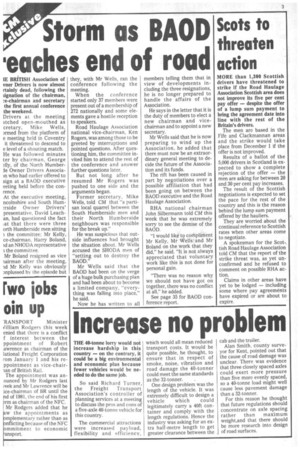Increase no problem
Page 5

If you've noticed an error in this article please click here to report it so we can fix it.
THE 40-tonne lorry would not increase hardship in this country — on the contrary, it could be a big environmental and economic plus because fewer vehicles would be needed to do the same job.
So said Richard Turner, the Freight Transport Association's controller of planning services at a meeting to discuss the pros and cons of a five-axle 40-tonne vehicle for this country.
The commercial attractions were increased payload, flexibility and efficiency, which would all mean reduced transport costs. It would be quite possible, he thought, to ensure that in respect of smoke, noise, vibration and road damage the 40-tonner could meet the same standards as the 32-tonner.
One design problem was the length of the vehicle. It was extremely difficult to design a vehicle which could legitimately carry a 40ft container and comply with the length regulations. Hence the industry was asking for an extra half-metre length to get greater clearance between the cab and the trailer.
Alan Smith, county surveyor for Kent, pointed out that the cause of road damage was unclear. There was evidence that three closely spaced axles could exert more pressure than five more evenly spaced, so a 40-tonne load might well cause less pavement damage than a 32-tonner.
For this reason he thought that future regulations should concentrate on axle spacing rather than maximum weight,and that there should be more research into design of road surfaces.






























































































































